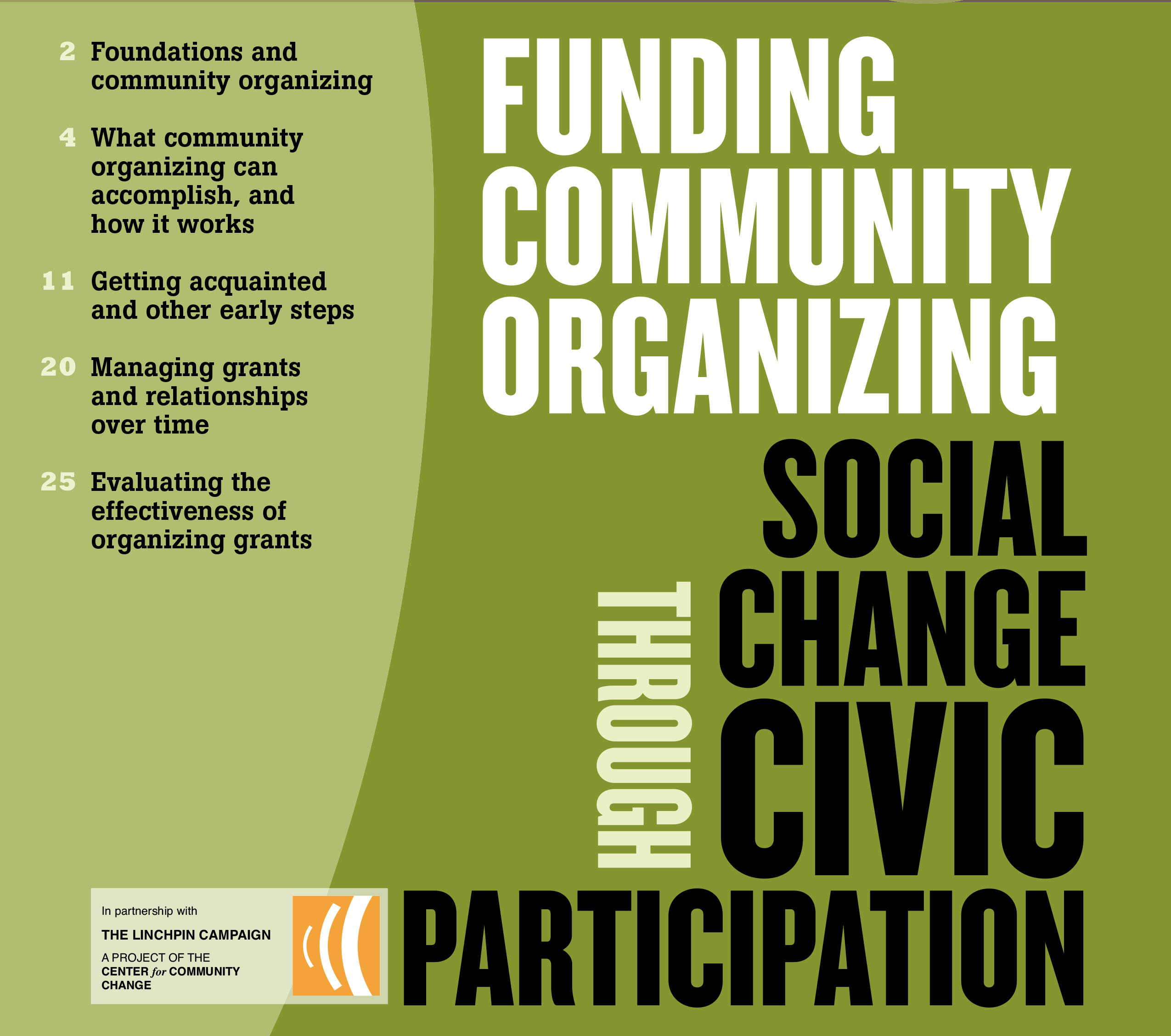Methods of Community Organizing
- Issue development by the people most affected. As one former program officer described, “It is the problems of importance to people that bring them out of their living rooms and into the meeting rooms of broader civic life: making those improvements is the motivating factor.” Organizing, that is, starts with listening. It’s built around a “fundamental ethic,” in the words of a foundation executive, that “the people who are directly experiencing and living these issues, facing these challenges, have enormous potential to come up with a course of action, solutions that best speak to those challenges.” Many organizing groups are therefore multi-issue in nature, periodically selecting a manageable number of campaigns for change or working serially on different problems. But several contributors pointed out that some groups have organized successfully around single issues: race, gender, or sexual orientation equity; school reform; economic, environmental, or criminal justice; worker or immigrant rights; or affordable housing.
- Constant attention to building membership, or “base building.” Organizing groups depend upon the “power of numbers” to balance the power of the status quo and moneyed interests in trying to accomplish change. Members will come and go, but good organizing, in the words of a funder, always “rejuvenates and revitalizes” its membership, drawing larger numbers of them into public life and rooting itself in the community.
- Attention to relationships. Recruitment of new members begins with a leader or organizer sitting down, often in “one-on-one” meetings, getting to know people and their concerns.
- Analysis of community problems and power. Through ongoing research and exercises like resource and power mapping organizing groups often dig deeply into problems and analyze in detail what it would take to solve them. A campaign to improve neighborhood schools, for example, might involve studying the schools’ reading scores, finding out what reading curriculum is used, figuring out who has authority to choose the curriculum, and meeting with that person — the principal, the district superintendent, or both — to discuss alternatives.
Takeaways are critical, bite-sized resources either excerpted from our guides or written by Candid Learning for Funders using the guide's research data or themes post-publication. Attribution is given if the takeaway is a quotation.
This takeaway was derived from Funding Community Organizing.


